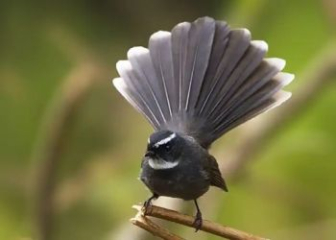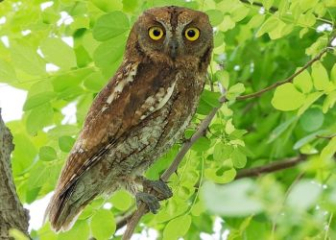Ringneck Parrot - Techniques for raising and caring for ringneck parrots from A to Z
Blog | by
Ringneck parrots are medium-sized, colorful, long-tailed, independent, somewhat snobbish, and stubborn parrots.
Ringneck parrot (scientific name: Psittacula krameri), commonly known as ringneck parrot, is a pet parrot with a special appearance with colorful feathers and a unique ringed neck. They attract owners not only because of their impressive appearance but also because of their ability to imitate well, independent and somewhat stubborn temperament, which brings a very interesting feeling.
To help you better understand Ringneck parrots, in today's article, nicebirds has shared detailed information about their origin, appearance, habits as well as proper breeding and care techniques. Let's explore now!
Origin and development of Ringneck parrots

Ringneck, a pet parrot with a distinctive ringed neck.
The Ringneck Parrot has the scientific name Psittacula krameri, the Vietnamese name is ring-necked parrot, a parrot species with a wide original distribution range throughout Africa, mainly in the following areas:
- Indian subcontinent : India, Pakistan, Nepal, Sri Lanka,..
- Africa : Senegal, Sudan, Egypt,...
In fact, Ringneck Parrots have been domesticated for over 2000 years, most notably in ancient India. They were even brought to Europe as a noble pet bird by ancient Roman times.
The Ringneck has four main subspecies: P. k. krameri, P. k. parvirostris, P. k. borealis and P. k. manillensis, but only the P. k. borealis (Indian Ringneck) is the most popular line in the bird world.
Over time, from Indian Ringneck, people have crossbred and bred many mutant colors such as yellow, white, blue, lavender, cinnamon,...
Currently, although Ringneck parrots are considered one of the most popular pet parrots in the world thanks to their intelligence and beautiful colors, in some countries in Europe and the Middle East, they are considered invasive species because of their ability to destroy crops.
Ringneck parrot appearance & how to distinguish male - female parrots

Impressive appearance of a primitive ringneck parrot.
General appearance of Ringneck parrots
Below are detailed characteristics of the appearance of Ringneck parrots. Let's learn together to be able to distinguish them from other parrots in the family.
- Size : Average from 37 - 42 cm, in which the tail accounts for half the length.
- Weight : 110 - 140 grams.
- Shape : Slender, long, slender, long, pointed tail.
- Head : Round, long neck, can rotate flexibly.
- Beak : Red, curved, sharp.
- Eyes : Small, bright, young are black, adults have white rims around the eyes.
- Feet : Two front toes, two back toes.
- Original (wild) color : Bright green, back and wings are darker green, red beak, round eyes, white iris with black border.
- Mutant colors : red-eyed yellow, red-eyed white, ash gray, sea blue, mint green, turquoise, mottled,...
Distinguishing between male and female Ringneck parrots
To distinguish between male and female ring-necked parrots, please note the following characteristics:
Male Ringneck Parrot :
- From 18 months onwards, parrots develop a distinctive “ring”. The ring is black on the chin combined with pink and red around the neck.
- Strong, aggressive gait.
Female Ringneck Parrot :
- Faint or absent neck ring
- Gentle gait, eyes smaller than male.
Ringneck Parrot Behavior

Ring-necked parrots have quite stubborn temperaments.
Ringneck parrots not only have a colorful, outstanding appearance, but they also have many special habits, more outstanding than other parrots, let's find out now.
Smart, good at imitating
Ringneck parrots are very intelligent, they can imitate human voices, car horns, telephone bells or some other familiar sounds. Their ability to "mimic" sounds is also very clear, loud, and easier to listen to than other average parrots.
If properly trained, cockatiels can also speak and respond to simple commands.
Independent, a bit "snobbish"
Ringnecks are friendly but not as affectionate as Sun Conures or African Greys. They are independent and can get impatient or snap if disturbed.
Psychology changes with age
Unlike other parrots, ring-necked parrots will change their psychology depending on their stage of development. Specifically as follows:
- Stage from 8 months - 1.5 years: Parrots become irritable, cranky, can bite people and do not like to be touched, this is also the parrot's crisis stage.
- After 1.5 years: If properly trained, they will become calmer and friendlier.
Active, need lots of toys
Ringneck parrots are very active, they like to fly, jump, gnaw, bite and explore everything around them. If they are locked in a cage for a long time, they will become stressed, scream and have uncontrolled behaviors.
So you need to prepare lots of toys in the cage so they can be entertained and less stressed.
Ability to scream
Although not as noisy as a Macaw or Sun conure, the ring-necked parrot can still be very loud, especially when wanting to attract attention or signal something unusual.
Not clingy but has good recognition ability
Although not attached to people, ring-necked parrots still have the ability to remember faces, recognize voices and react specially to familiar people, especially when cared for from a young age.
They also tend to be close to only one person and avoid others.
Reproductive behavior
In the wild, ring-necked parrots usually breed from December to April. But when kept in captivity in Vietnam, they will breed from November to March, when the weather is cool and there is little rain.
- Ringneck parrots breed when they are 18 - 24 months old. But it is best to be over 2 years old.
- When it's breeding season, the male parrot will court the female parrot by shaking his head, wagging his tail, "singing" in a low voice, stroking each other's beaks,... If the female parrot does not run away but responds to that action, it is a sign that they are ready to pair up for reproduction.
- Ring-necked parrots incubate eggs for about 22 - 25 days, the female parrot incubates the eggs, the male parrot is responsible for protecting and feeding the female parrot.
- Baby parrots will be featherless and eyes will not open after hatching. After about 2 weeks, down will grow. After 5-6 weeks, they will have enough feathers and can practice standing and flapping their wings.
Ringneck parrot raising techniques from A to Z
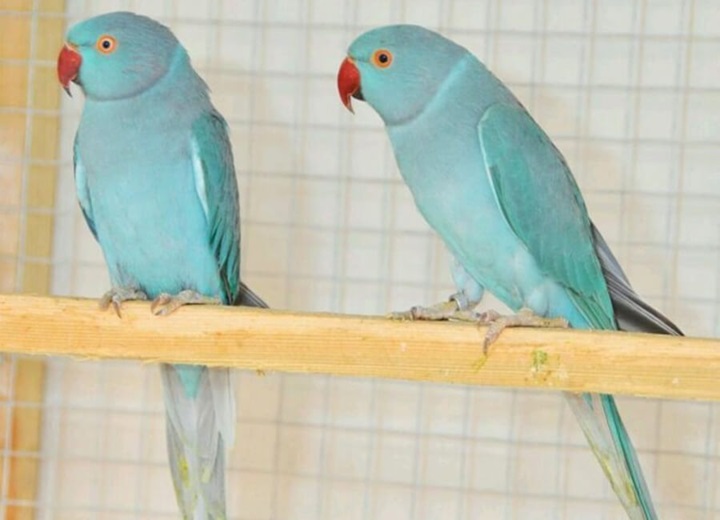
Image of two Ringneck parrots perched on a wooden bar in their cage.
Ringneck is a rather "stubborn" and somewhat "snobbish" parrot, so when raising them, you need to grasp the key techniques to help this parrot become more friendly and less "stubborn". Please follow some of the following instructions!
Choosing a healthy Ringneck parrot breed
The first important thing in raising a Ringneck parrot is that you need to choose a healthy parrot so that you can take care of it more easily. You should choose to raise a baby parrot from 2 - 3 months old, with full feathers, able to eat by itself to make it easy to raise and train.
A healthy baby parrot will meet the following criteria:
- Bright, flexible eyes
- Even hair, no patchy shedding.
- Beak is not crooked, legs are not disabled
- Good reflexes, smart, active.
Prepare suitable cages, pens & living environment
For the Ringneck parrot to adapt well to captivity and develop in the best way, you need to prepare a suitable living environment and cage, which must at least meet the following requirements:
- Minimum size : 60 x 60 x 90 cm (length x width x height)
- Spacing of cage bars : < 1.5 cm
- Bird cage material : Choose stainless steel
- Basic equipment : Sliding door, safety latch, wooden perch, litter tray, food and water cups, swing, climbing ladder, chew toys,...
- Cage location : Choose a cool place, limit drafts, strong light, avoid noisy places, smoke, dust,...
Balanced diet
Do you know what Ringneck parrots eat? Like most other parrots, Ringneck parrots are vegetarian. So when you keep them in a cage, you can feed them the following foods:
- Main food : Mixed cereal grains, synthetic food pellets specifically for pet parrots.
- Supplemental foods : Vegetables and fruits such as carrots, green beans, papaya, mango, peeled apples,...
- Drinking water : Use boiled water that has cooled down and needs to be changed daily.
- Foods to avoid : Foods with lots of sour, spicy, salty, sweet spices, coffee, butter, onions, garlic,...
Clean cage and take care of parrots regularly
To keep your Ringneck parrot healthy, you need to pay attention to cleaning the cage, bathing, and trimming its nails regularly. Specifically as follows:
- Clean the cage 2 - 3 times per week.
- Litter trays and leftover food should be changed daily.
- Bathe your parrot 1 - 2 times per week, using a gentle spray or shallow basin of water.
- If the nails are too long, cut them carefully.
Ringneck Parrot Training
As you know, Ringneck is a stubborn parrot, so you need to be patient in training to help this parrot become more obedient and "gentle". Please follow the instructions below.
- Get to know and interact with parrots every day.
- After getting used to it, teach it basic commands like climbing on your hand, standing on your shoulder, learning to say hello, bye, etc. and reflexively flying back when called by name.
- Be patient and use rewards to encourage your parrot when it does the right thing. Never use violence such as cursing, hitting or threatening because it will have the opposite effect and make your parrot more stubborn.
Health care and disease prevention for ring-necked parakeets
Although it is a wild parrot and has good resistance, when kept in captivity in artificial conditions, Ringneck is still susceptible to the following diseases:
|
Disease name, abnormal signs |
Token |
How to handle |
|
Diarrhea |
Loose, white, strange smelling, sticky stool |
Stop feeding your parrot fresh fruits and vegetables. Feed your parrot digestive enzymes. Check food quality |
|
Abnormal hair loss |
Patchy hair loss Unusual skin redness |
Check again to see if the parrot has mites or feather fungus? Parrot malnutrition Parrots are stressed. |
|
Parrots cry abnormally |
Parrots are stressed and bored. |
Let the parrot out to play Add more toys for your parrot Interact with parrots more. |
How much does a Ringneck parrot cost?
If you want to raise a Ringneck parrot but don't know if this parrot is expensive or not? Is it suitable for your finances? Please refer to the newly updated 2025 Ringneck parrot price list at the bird market shared below.
|
Ringneck Parrot |
Reference price (VND/piece) |
Characteristic |
|
Ringneck |
800,000 - 1,600,000 |
From 2 - 4 weeks old, not fully feathered, not able to eat by themselves |
|
Green Ringneck |
1,500,000 - 2,500,000 |
Popular, easy to raise |
|
Yellow Ringneck (lutino) |
3,000,000 - 4,000,000 |
Hybrid color, beautiful, easy to raise |
|
Ringneck blue |
3,500,000 - 4,500,000 |
Unique, hot color |
|
Grey Ringneck |
4,000,000 - 6,000,000 |
Rare color |
|
Purebred, talking Ringneck |
Over 5,000,000 |
Depends on purity and speaking ability. |
Note :
When raising Ringneck parrots, in addition to the cost of buying breeding birds, you need to spend some more money such as money to buy cages, buy daily food, money for regular health check-ups,... ranging from 1 - 3 million VND, please consider!
Ringneck Parrot FAQ
Can Ringneck Parrots Talk?
Yes, Ringneck parrots can imitate human speech as well as some characteristic sounds.
How long can a Ringneck Parrot live?
Average 20 - 30 years if properly cared for in optimal environment.
Can Ringneck parrots be kept with other parrot species?
No, because Ringneck parrots are territorial, independent, and prone to conflicts with other parrots.
Beautiful Ringneck Parrot Pictures
Please enjoy some impressive moments of the Ringneck parrot, a species of parrot with an impressive appearance, eye-catching feathers and lovely expressions shared below.

Indian ringneck blue parrot picture
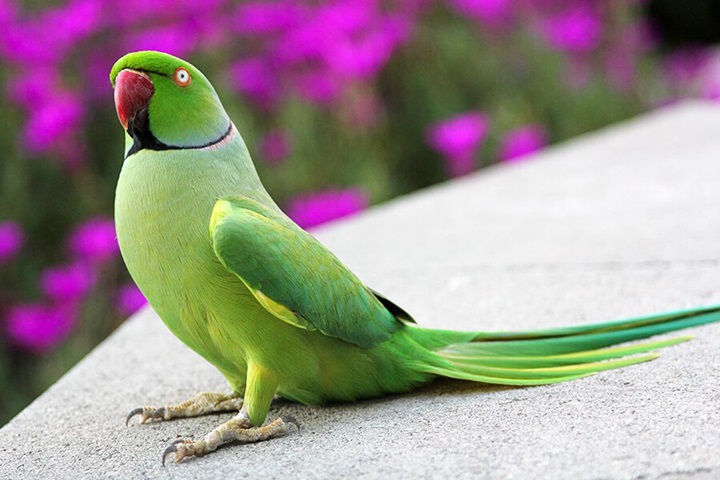
Green Ringneck Parrot with distinctive black collar.
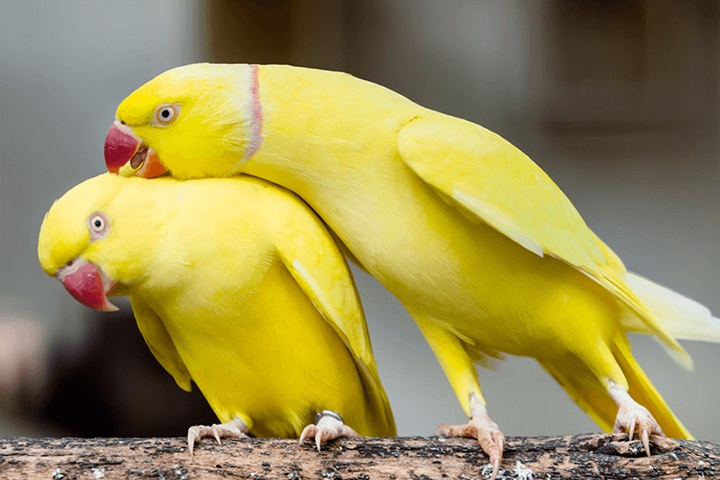
Two yellow ringneck parrots are "courting" each other.
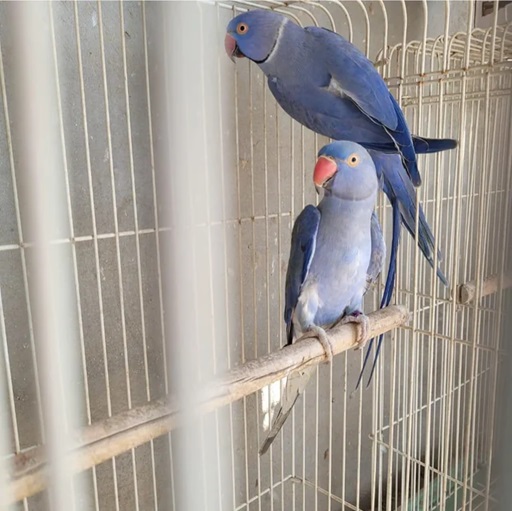
Two violet Ringneck parrots are kept in a cage.
Through the article that nicebirds.net shared above, it can be seen that the Ringneck parrot is a pet parrot that not only has a special appearance with a colorful, eye-catching ring, but also has a very intelligent, independent personality, although a bit stubborn but still trainable. If you want to raise a fun, personality pet parrot, the Ringneck is a great choice!
Goodbye and see you soon in the next articles of the Blog section to discover more beautiful and interesting bird species.

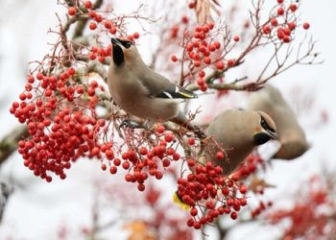

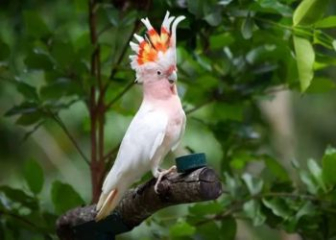
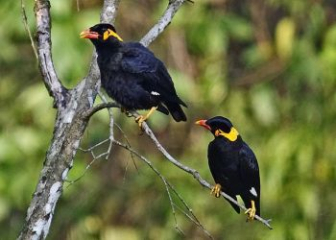
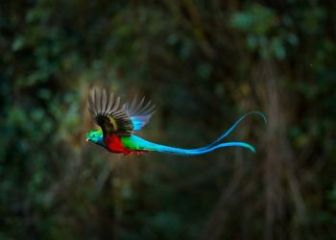





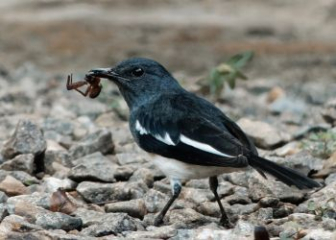
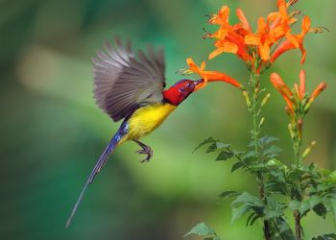


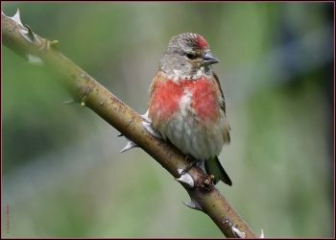
_350x250.jpg)
